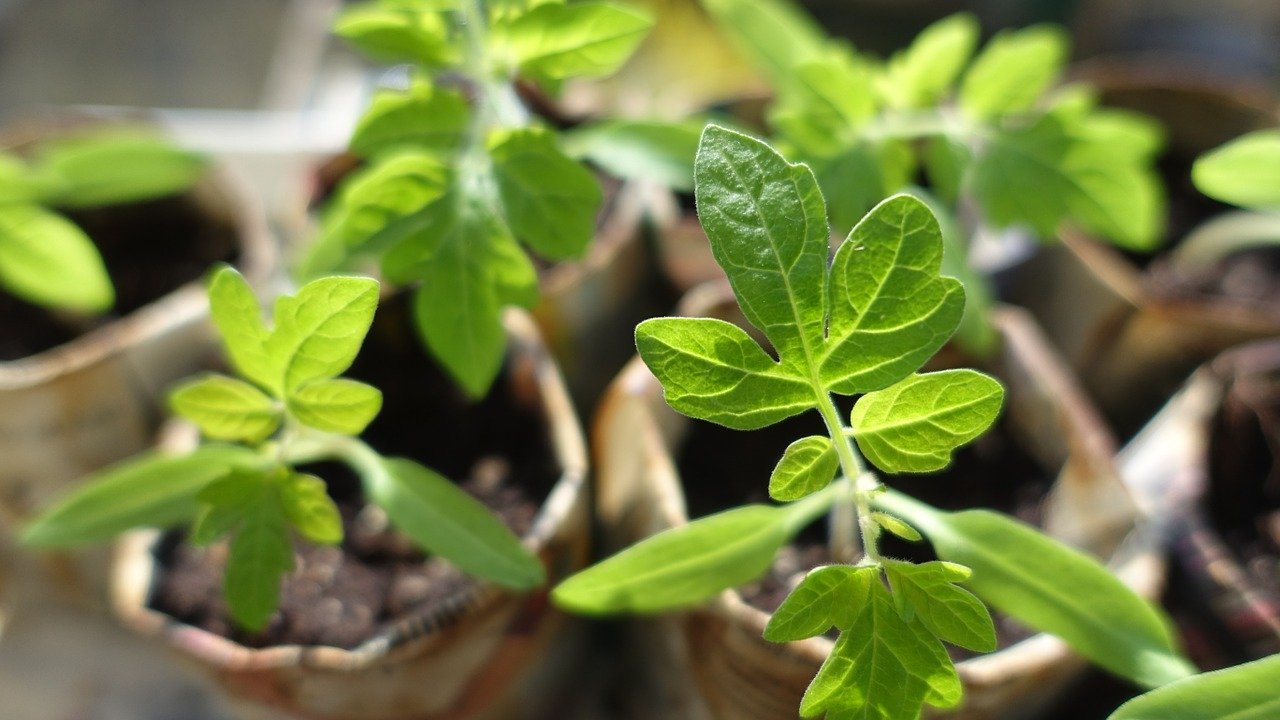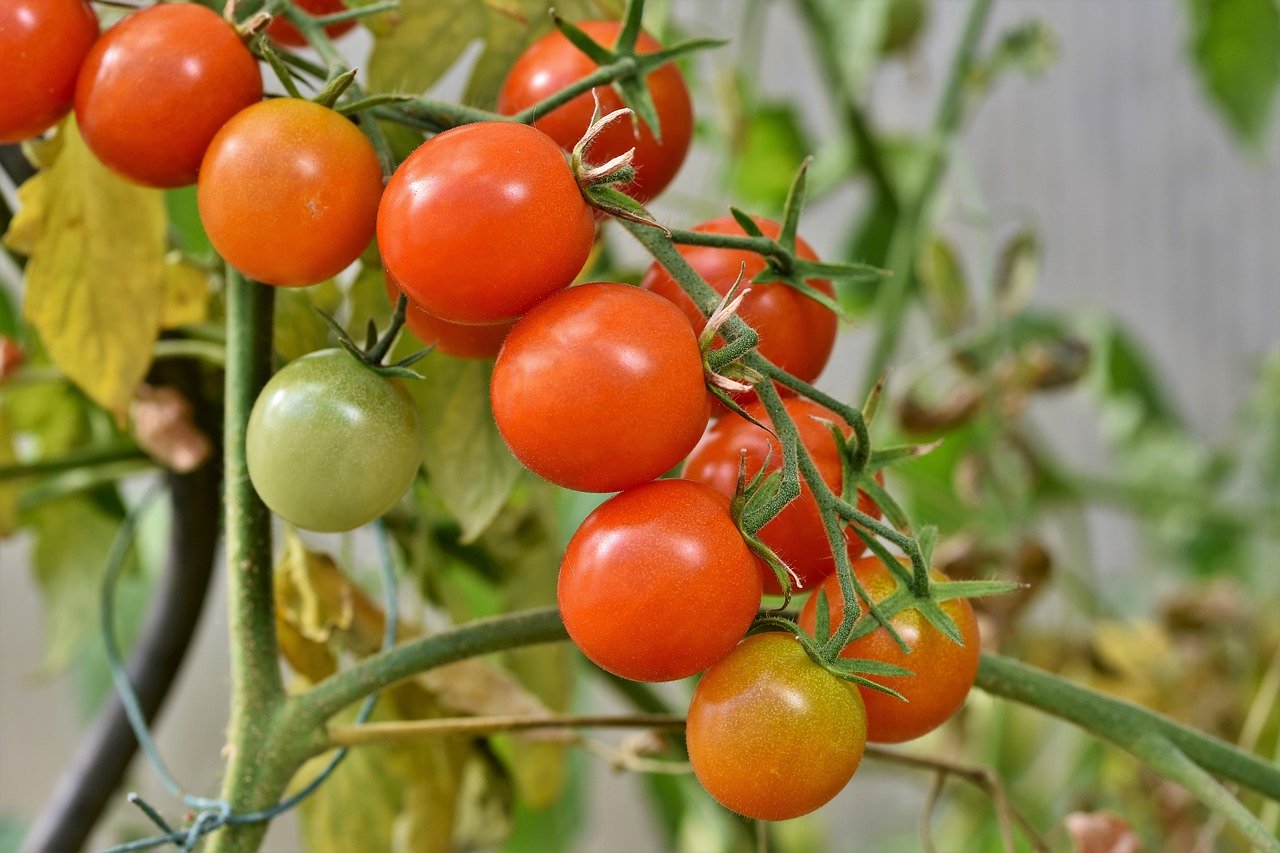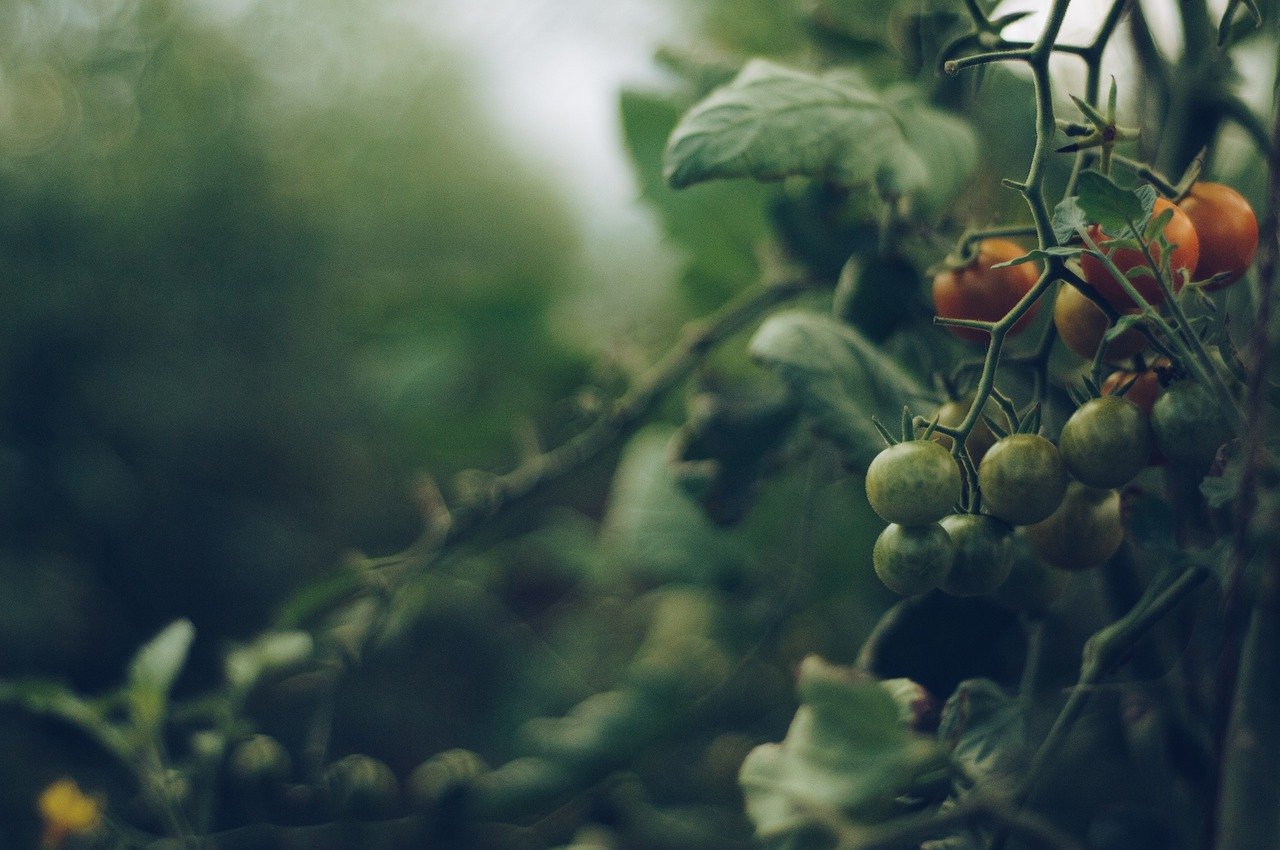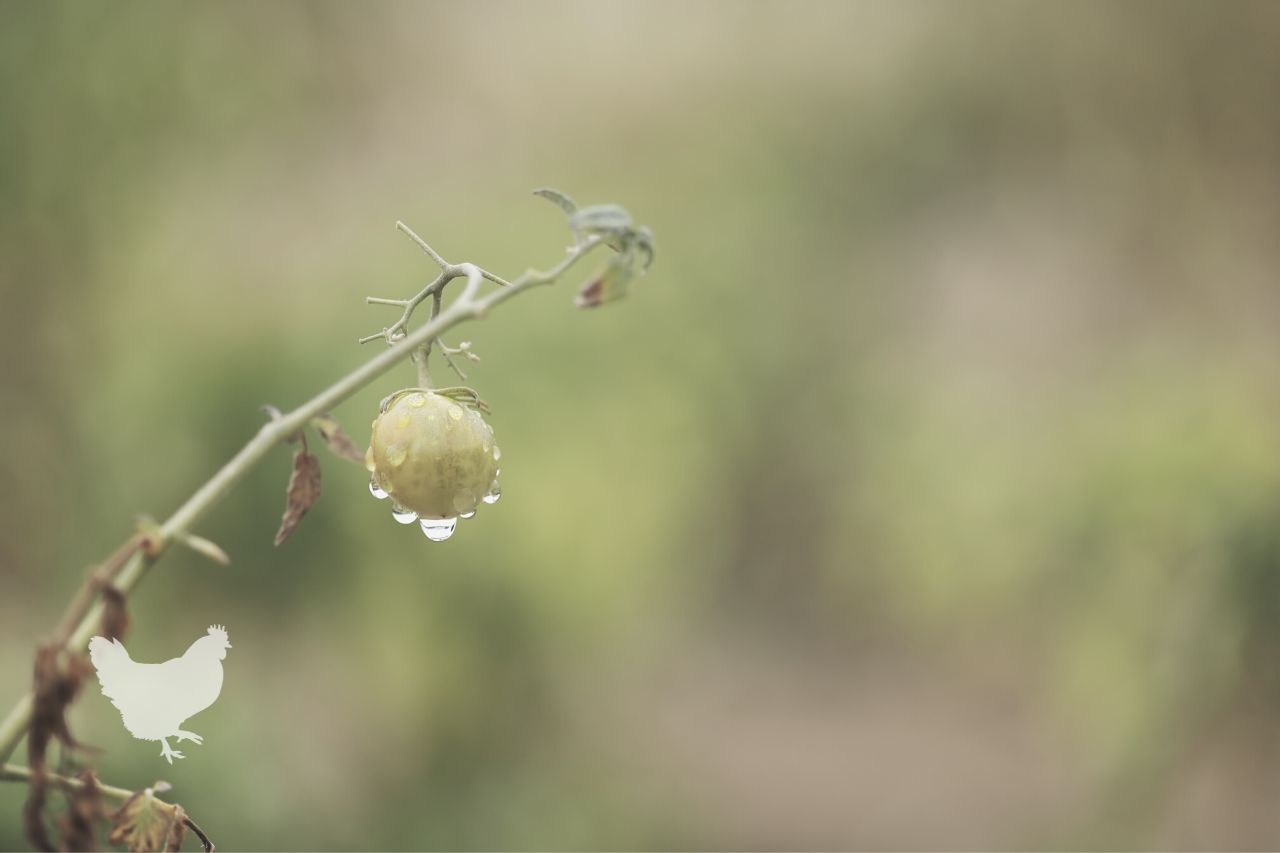Although tomatoes are quite easy to grow, it is also quite easy for them to become subject to a wide variety of maladies. They are susceptible to various fungus and bacterial infections, and they are also sensitive to cold temperatures and even harsh sunlight.
What can you do when your tomato plants exhibit wilted leaves and lackluster performance? In this article, we explore some of the reasons your tomato plant may seem to be dying. We also offer good advice on prevention, remedies and fixes to help you save your dying tomato plant. Read on to learn more on how to save a dying tomato plant.
What You'll Learn Today
- Don’t Panic After Transplanting
- Be Sure Your Tomato Plants Are Properly Fed And Watered
- Plant Your Tomatoes In The Right Location
- Don’t Let Your Tomato Plants Get Too Hot
- Keep An Eye Out For Pests
- Learn To Recognize Common Tomato Plant Diseases
- Frequently Asked Questions
- What is the #1 cause of the start and spread of diseases in tomato plants, and what can you do to avoid it?
- Is deep watering with a soaker hose always safe for tomato plants?
- What type of fungi causes root rot in tomato plants?
- Why is it better to use stakes to support your tomato plants rather than using cages?
- If my tomato plants do develop fungal problems, is it alright to use commercial fungicides?
- What are the most effective treatments that can be used to prevent and treat diseases in tomato plants?
- Why is it important to keep your tomato patch (and your entire yard and garden) clean and tidy?
- How do you create the correct culture for healthy, strong tomato plants?
- What are flea beetles, and how can you prevent them from damaging your tomato plants?
- What can you do about tiny pests like whiteflies and aphids on tomato plants?
Don’t Panic After Transplanting

Newly transplanted seedlings and even mature plants transplanted from one pot to another or from pot to garden may wilt and suffer a bit from transplant shock. You can avoid this by handling the plants’ roots carefully during the transplanting process.
If you’re moving plants from indoors to outdoors, take care to protect them against harsh sunlight and strong winds for the first week or so of their time outdoors.
Be Sure Your Tomato Plants Are Properly Fed And Watered

Tomatoes are thirsty plants, and the fact that they prefer full sun means that quite a bit of water evaporates from the soil around them.
Be sure to give your tomato plants at least an inch of water weekly. This is the minimum amount to prevent wilting. If your soil is very sandy, or if your environment is very windy, your plants may need more water.
Note that in an extremely hot environment, you may need to give your tomato plants more than an inch of water per week. Even so, it is possible to overwater, and this can cause wilting.
If you’re sure that your plants are getting plenty of water, yet they are still wilted, try allowing the top two inches of soil to dry thoroughly before watering again.
Before you plant, amend the soil with compost, a seaweed fertilizer or a commercial tomato plant fertilizer. It takes lots of energy for tomato plants to grow and produce fruit, so they need to be well fed. Feed them at least twice a month. Every ten days makes an ideal tomato plant feeding schedule.
Plant Your Tomatoes In The Right Location

A setting that receives at least six hours of sun daily is desirable. Shelter from high winds reduces stress and damage to your plants. Make sure the soil your tomatoes are planted in is loose and well draining.
Don’t position your plants close to a walnut tree. These trees produce a toxin known as juglone, which spreads through the soil around them and kills nearby plants. Your tomato plant should be a minimum of 75 feet away from any walnut tree.
Don’t plant your tomatoes too close to your lawn if you use herbicides to control weeds. Herbicides that are intended to kill dandelions and several other types of weeds will also kill your tomato plants.
Don’t plant your tomatoes in the same place year after year. Rotate your crops so that pests and diseases don’t have a chance to get a firm foothold.
Don’t Let Your Tomato Plants Get Too Hot
Even though tomato plants do need lots of sun to thrive, there are places that simply have too much sun.
Desert settings and very hot states such as Florida and Texas may provide an environment that simply provides too much heat and sun, even for tomatoes.
In these locations, you may want to be sure that your plants get full morning sun and shade during the heat of the afternoon.
How To Save A Potted Tomato Plant From Dying
Keep An Eye Out For Pests
Examine the leaves of your plants frequently for potential pests. Some common tomato plant pests include:
- Tomato Horn Worms
- Green Spider Mites
- Red Spider Mites
- Stalk Borers
For mites and other tiny pests, try spraying the plants with a forceful blast of water daily for a couple of days. This will knock aphids, mites and similar small pests off the plants.
Follow-up with an insecticidal soap mixture to prevent their return. Look into introducing ladybugs and other predatory insects to your garden to keep mites, aphids and other tiny bugs under control.
Stalk Borers and Tomato Horn Worms can be picked off and dropped into a bucket of soapy water as you see them. Tomato Horn worms are easy to spot, stalk borers are usually inside the plants’ stem, so you won’t see them often. If you do, pick them off and get rid of them.
Be sure to examine your plants frequently as pests tend to return again and again. A healthy population of predatory insects (such as parasitic wasps) can help keep these unwanted insects under control.
Learn To Recognize Common Tomato Plant Diseases
If your tomato plants tend to wilt during the heat of the day and then recover in the nighttime, they may be infected with fungal diseases such as Verticillium Wilt or Fusarium Wilt. These are caused by a soil dwelling fungus, and unfortunately there is no cure.
If your tomatoes are infected, you must simply pull them up and dispose of them properly. Don’t put them in your compost heap. Pack them up and set them out with the trash or burn them.
On the bright side, fungal infections that cause solid leaf spot can be treated with a foliar application of fungicides. Good foliar fungicides are made with:
- Chlorothalonil
- Copper
- Maneb
These products can be used on tomato seedlings within the first month after planting. Thereafter, apply 2 to 4 times a month to kill fungus and prevent plant death.
Leaf spots that appear in the form of rings may be an indication of a viral infection known as Tomato Spotted Wilt Virus.
This virus causes the plant to wilt and brown or green rings to appear on the fruit. The foliage become stunted and bronzed. This viral infection cannot be cured, and you must remove and destroy the plants.
Tomato plants that are correctly watered and kept in a good location yet still exhibit yellow leaves may have a bacterial infection. In this case, you’ll need to pull the plants up and start over again.
As a general rule, any time your tomato plants are suffering from a bacterial or viral infection, don’t throw the discarded plants or their prunings into your compost heap.
Always dispose of them by sending them away with the trash or by burning them.
Frequently Asked Questions

What is the #1 cause of the start and spread of diseases in tomato plants, and what can you do to avoid it?
A: Excessive dampness, especially on tomato plant leaves, creates the ideal situation for the start and spread of disease spores. This is why it is important to slow water tomato plants at soil level (e.g. using a soaker hose) and avoid sprinkling and overhead irrigation. It is also important to refrain from working in your tomato patch (especially pruning) after a rain. As you move through the wet plants, you are very likely to spread disease spores.
Is deep watering with a soaker hose always safe for tomato plants?
A: The right amount of deep watering (a couple of inches a week) is safe. Excessive watering can lead to root rot. Take care to provide your tomato plants with well-draining soil and refrain from overwatering. Remember to rotate your tomato crop every year or two to avoid giving the fungal spores that cause root rot a chance to establish themselves in the soil.
What type of fungi causes root rot in tomato plants?
A: The fungus known as Fusarium oxysporum f. sp. radicis-lycopersici (FORL) is the culprit responsible for causing root rot in members of the nightshade family of plants (e.g. tomatoes, peppers and eggplant). This is why it is important, when planning your crop rotation, not to rotate members of this plant family through the same plots of land. Doing so will cause your crop rotation to be ineffective in preventing the spread of this disease.
Why is it better to use stakes to support your tomato plants rather than using cages?
A: Tomato cages tend to cause plants’ stems and leaves to become crowded. This causes poor air circulation and promotes fungal and bacterial growth. Staking your plants gives you more control over their spacing and allows for better air flow and more exposure to sunlight. Ample amounts of light and air help keep tomato plants happy and healthy.
If my tomato plants do develop fungal problems, is it alright to use commercial fungicides?
A: As long as you choose a fungicide that is specifically formulated for use on tomato plants, it is alright to use commercial fungicides; however, this may not be the best or most effective way to deal with this problem.
What are the most effective treatments that can be used to prevent and treat diseases in tomato plants?
A: Prevention in the form of good planning and consistent, correct care is the best way to keep your tomato plants from developing diseases. If disease does strike, organic options (e.g. compost extracts or compost tea) sprays can be useful. When dealing with fungal problems on leaves, such as powdery mildew, a solution consisting of:
- Baking soda-1 heaping tbsp.
- Mild soap-a few drops
- Vegetable oil-1 tsp
- Water-1 gallon
… can be applied as a weekly foliar spray. It will not entirely kill off mold spores, but it will change the pH balance on the leaf surfaces, thus preventing mold growth. It must be applied on a regular, ongoing basis with repeat applications after heavy rain.
Why is it important to keep your tomato patch (and your entire yard and garden) clean and tidy?
A: Rubbish, dead plants, garden debris, rampant weeds and the like provide breeding grounds for disease spores, as well as garden pests. Keeping your yard and garden tidy helps you keep these invaders under control. Planned use of garden by-products, such as chopped leaves, compost and welcomed, managed native plants supports you in creating a healthy landscape that welcomes beneficial wildlife and pollinators.
How do you create the correct culture for healthy, strong tomato plants?
A: To keep your tomato plants vibrant, begin by amending your soil with natural compost to create a nourishing, well-draining substrate for them. Choose tomato varieties that have been developed to resist disease. Space your plants properly, prune them regularly and judiciously and provide them with the right amounts of water and fertilizer. Strive to create a garden space that provides ample light, good air flow and protection against high winds.
What are flea beetles, and how can you prevent them from damaging your tomato plants?
A: Flea beetles are very small, green jumping beetles that chew holes in tomato plant leaves. You can prevent them from damaging your tomato plants by encouraging natural predator insects, such as damsel bugs, bigeyed bugs and parasitic wasps to live in your garden. Insecticides like carbaryl or permethrin are effective controls if needed, but follow packaging instructions closely to avoid damaging beneficial fauna in your garden.
What can you do about tiny pests like whiteflies and aphids on tomato plants?
A: You can prevent whitefly and aphid damage to tomato plants by encouraging natural predators such as ladybugs and those previously mentioned. Keep a close eye on your tomato plants, examining them carefully for signs of these tiny pests. If you catch them early, targeted spraying with insecticidal soap solution can keep them under control.
My god, I hope these tips can help. My tomato garden is dying 🙁
Thank you so much for allowing me to learn new things about tomato planting. Its good
From Nigeria
I pray these tips help me too. This is the 3rd year I have had my tomato garden and it’s really just a see how it goes and learn from the past mistakes/happenings. Thanks for the tips! Good luck to everyone dealing with transplant shock or any kinda wilt.